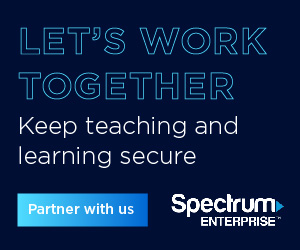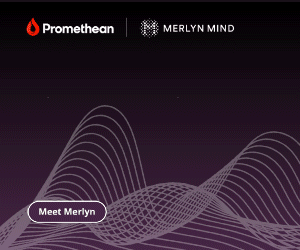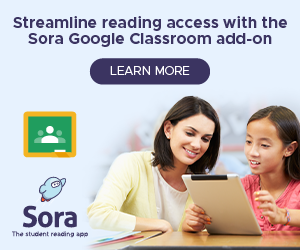It’s back-to-school season across the country, and while this is met with mixed emotions, like it or not, classroom doors are open and welcoming students.
Here are some back-to-school tips, advice, and valuable insights from educators, stakeholders, and industry experts.
We need to prioritize discussions on how to effectively support multilingual students. Our country is home to a wide range of diverse and vibrant cultures, and it’s important that we acknowledge and value the languages these students already bring with them when they enter U.S. schools. Unfortunately, our education system often struggles to provide adequate support for these students if they don’t know English. However, I am hopeful that this year we will witness a renewed commitment towards providing resources, policies, and initiatives that cater to English Language Learners and promote multilingualism in schools. School and district leaders will be actively seeking innovative approaches, leveraging data, and collaborating with advocacy organizations and policymakers to bring about meaningful changes in how we educate English Language Learners.
–Dr. Maria Armstrong, Executive Director, Association of Latino Administrators and Superintendents (ALAS)
The clean energy industry is growing at an astronomical rate, with the EIA predicting that wind, solar and other renewable sources will exceed one fourth of the country’s electricity generation for the first time in 2024. In order to keep this industry flourishing, schools need to prepare the next generation of workers in this industry. To do this, teachers will need to incorporate renewable energy into lessons and provide hands-on learning opportunities for students. The good news is, we are seeing more clean energy companies investing in education to help provide resources and training to make this a priority.
–Michael Arquin, Founder, KidWind
This year many schools will continue to focus on ensuring that their curriculum and instruction aligns with the science of reading. Many districts will focus on providing teachers with training on new curriculum adopted by the school/district and instructional methods that place emphasis on phonological awareness and phonics. RIF will continue to align our model based on complementing the science of reading with the critical element of the joy of reading which will be especially important as educators look for ways to motivate and encourage greater frequency and engagement in reading. Accompanying this, many states will focus on adopted policies to implement early Dyslexia screeners for K-2 students, and along with this, many schools will need reading specialists who can administer these assessments and provide early interventions for at-risk students. As students continue to make progress to close academic gaps generated by the pandemic, it is evident that there are also social milestones that many students missed out on as well. Therefore, many schools/districts have adopted social emotional learning curriculums to address these needs that will continue to be a focus into the new year.
–Erin Bailey, Director of Content, Reading Is Fundamental
By the 2023-24 school year, career connected learning will become a priority for district administrators, superintendents, state leaders, and parents. They will recognize the benefits of connecting students’ studies to their future careers – improved academic performance; enhanced job opportunities; and increased economic mobility. This shift in attitudes towards career-connected learning is paramount for our education system to remain competitive globally and provide all students with the skills they need to succeed, and this shift is inevitable and essential for student success. It’s time we make sure every student has access to comprehensive career guidance that gives them the power to make informed decisions about their future. With the right support, every student has the potential to achieve their career ambitions.
—Edson Barton, CEO, YouScience
Even as we continue to overhaul training and curriculum around the science of reading, students who passed through our classrooms prior to this awakening sit in our buildings right up through high school without the early foundations that enable all the complex literacy processes thereafter. We must bolster our collective faith that this is a problem we can solve. Using models to accelerate learning through focus, intensity, coherence, and specificity still stand as high-leverage methods of instruction. Explicit, systematic, personalized instruction science corrects missed learning opportunities, and instills the confidence and positive learning identity all students deserve to develop at school. This year, let’s attend to the upper grade students forced to spend all their cognitive coin at the word level, so they too can eventually enjoy the gifts of the grade-level texts that await them.
–Elizabeth Bassford, Vice President, Content & Implementation, Curriculum Associates
Last spring, we came across a STEAM robot solution which provides early learning coding opportunities for elementary students. Older children have access to these solutions, so why not offer the opportunity for young learners? It is important to get students exposed to coding and robotics early so it will be natural to them once they get to middle school and beyond. Knowing the importance, we were able to secure funding through the Expanded Learning Opportunities Program (ELOP) to bring the screen-free KIBO robot to our students. Initially my teachers were intimidated and unsure of how to teach coding and robotics, but with training and some fun curriculum to follow, we were able to get going through our summer program with our TK, kindergarten, 1st grade, and 2nd grades. Within 5 days, everyone just loved KIBO—students and teachers! Incorporating artwork (creating robot zoo animals), creating programming sequences, coding, and physical movement (the “KIBO Hokey Pokey”): the kids and their educators just got it. They were coding, collaborating, and creating. From that success over the summer, our goal now is to expand its use further. Our plan for the new school year is to bring KIBO to every elementary school in the district for our after-school enrichment programs, to encourage coding, computational thinking, and problem-solving. We are excited to expose our students to all that coding and robotics can offer, and encourage project-based, active learning.
–Dr. Melissa Bradex, District Instructional Technology Specialist, Wasco Union Elementary School District, Wasco, CA
There are both exciting opportunities and some worries in math education. What is exciting is several states, including Ohio and Oregon as good examples, are looking at different configurations for getting all students engaged in mathematics by creating new curriculum pathways. This is coming about as we realize that the world we live in is awash with data, and students need to be able to make sense of that data. They need to learn what types of questions to ask and to see how mathematics can be useful. We will see more students having access to mathematical action technology, such as that offered by TI and others, which allows students to interact with the data and explore real contexts. For example, investigating the factors that contribute to the wage gap.What worries me is that we have not yet recovered from the effect of the pandemic on learning in math, and even before COVID, we were seeing a decline in NAEP math scores. And those who are suffering the most are those with the most needs. The situation is compounded by an anticipation of a dire shortage of teachers, particularly in math and special education. This is not something we as educators can fix on our own; we need to make the public aware of the consequences of such shortages and push for more opportunities and incentives for individuals to enter the teaching force.
–Gail Burrill, Academic Specialist, Program in Mathematics Education at Michigan State University
- SEO Powered Content & PR Distribution. Get Amplified Today.
- PlatoData.Network Vertical Generative Ai. Empower Yourself. Access Here.
- PlatoAiStream. Web3 Intelligence. Knowledge Amplified. Access Here.
- PlatoESG. Automotive / EVs, Carbon, CleanTech, Energy, Environment, Solar, Waste Management. Access Here.
- PlatoHealth. Biotech and Clinical Trials Intelligence. Access Here.
- ChartPrime. Elevate your Trading Game with ChartPrime. Access Here.
- BlockOffsets. Modernizing Environmental Offset Ownership. Access Here.
- Source: https://www.eschoolnews.com/innovative-teaching/2023/08/16/53-back-to-school-tips/
- :has
- :is
- :not
- $UP
- 1
- 10
- 1st
- 2024
- 250
- 30
- 53
- a
- Able
- About
- academic
- accelerate
- access
- Achieve
- acknowledge
- across
- Action
- active
- actively
- address
- administer
- administrators
- adopted
- advice
- advocacy
- after-school
- align
- Aligns
- All
- allows
- along
- already
- also
- am
- ambitions
- an
- and
- animals
- anticipation
- approaches
- ARE
- Armstrong
- around
- artwork
- AS
- assessments
- Association
- At
- attend
- author
- await
- aware
- awareness
- BAILeY
- banner
- based
- BE
- become
- before
- benefits
- Beyond
- bolster
- both
- bring
- but
- by
- came
- CAN
- Career
- careers
- cater
- Center
- ceo
- Changes
- Children
- clean energy
- Close
- Coding
- cognitive
- Coin
- collaborating
- Collective
- College
- coming
- commitment
- Companies
- competitive
- complex
- comprehensive
- confidence
- connected
- Connecting
- Consequences
- content
- contexts
- continue
- contribute
- country
- country’s
- Covid
- Creating
- critical
- Curriculum
- data
- Days
- decisions
- Decline
- deserve
- develop
- different
- dire
- Director
- discussions
- district
- diverse
- do
- Dont
- doors
- Early
- Economic
- Editorial
- educate
- Education
- educators
- effect
- effectively
- EIA
- electricity
- element
- emotions
- emphasis
- enable
- encourage
- energy
- engaged
- engagement
- English
- enhanced
- enjoy
- ensuring
- Enter
- especially
- essential
- Ether (ETH)
- Even
- eventually
- Every
- everyone
- evident
- example
- examples
- exceed
- excited
- exciting
- executive
- Executive Director
- Expand
- expanded
- experts
- explore
- exposed
- factors
- faith
- First
- first time
- Fix
- Focus
- follow
- For
- Force
- Foundations
- founder
- Fourth
- Frequency
- from
- fun
- funding
- further
- future
- gap
- gaps
- generated
- generation
- get
- getting
- gifts
- gives
- Globally
- goal
- going
- good
- grade
- graduate
- great
- greater
- Growing
- guidance
- hands-on
- Have
- having
- height
- help
- High
- Home
- hopeful
- How
- How To
- However
- http
- HTTPS
- i
- Identity
- if
- implement
- implementation
- importance
- important
- improved
- in
- Incentives
- Including
- incorporate
- incorporating
- increased
- individuals
- industry
- industry experts
- inevitable
- informed
- initially
- initiatives
- innovative
- insights
- instructional
- interact
- interventions
- into
- investing
- IT
- ITS
- Job
- Job Opportunities
- journalism
- jpg
- just
- Keep
- kids
- Know
- Knowing
- language
- Languages
- leaders
- LEARN
- learning
- Lessons
- Level
- leveraging
- like
- literacy
- live
- Look
- looking
- loved
- make
- many
- maria
- Maryland
- math
- mathematical
- mathematics
- me
- meaningful
- Media
- met
- methods
- Middle
- Milestones
- missed
- mixed
- mobility
- model
- models
- more
- most
- movement
- must
- my
- Natural
- Need
- needs
- New
- new year
- news
- next
- now
- of
- offer
- offered
- often
- Ohio
- older
- on
- once
- ONE
- open
- opportunities
- Opportunity
- or
- order
- Oregon
- organizations
- Other
- Others
- our
- out
- over
- Overhaul
- own
- pandemic
- Paramount
- parents
- particularly
- passed
- performance
- Personalized
- photo
- physical
- Place
- plan
- plato
- Plato Data Intelligence
- PlatoData
- policies
- policymakers
- positive
- Posts
- potential
- power
- predicting
- Prepare
- president
- prestigious
- Prior
- Prioritize
- priority
- Problem
- problem-solving
- processes
- Program
- Programming
- Programs
- Progress
- project-based
- promote
- provide
- provides
- providing
- public
- Push
- Questions
- range
- Rate
- Reading
- real
- realize
- recognize
- remain
- Renewable
- renewable energy
- renewed
- Resources
- RIF
- right
- robot
- robotics
- s
- School
- Schools
- Science
- scores
- Season
- secure
- see
- seeing
- seeking
- sense
- several
- she
- shift
- shortage
- shortages
- sit
- situation
- skills
- So
- Social
- solar
- solution
- Solutions
- SOLVE
- some
- something
- Sources
- special
- specialist
- specialists
- specificity
- spend
- spring
- stakeholders
- stand
- State
- States
- Steam
- Still
- Struggles
- Student
- Students
- studies
- succeed
- success
- such
- suffering
- summer
- support
- sure
- system
- teachers
- Teaching
- Technology
- that
- The
- the world
- their
- Them
- There.
- therefore
- These
- they
- Thinking
- this
- this year
- those
- Through
- time
- tips
- to
- too
- towards
- Training
- types
- u.s.
- unfortunately
- union
- university
- University of Maryland
- URL
- use
- using
- Valuable
- value
- vibrant
- vice
- Vice President
- wage
- ways
- we
- welcoming
- WELL
- were
- What
- What is
- when
- which
- while
- WHO
- why
- wide
- Wide range
- will
- wind
- with
- within
- without
- witness
- Word
- workers
- world
- year
- yet
- young
- zephyrnet
- ZOO















